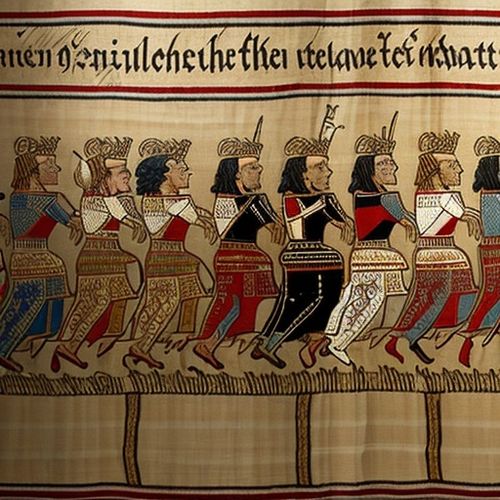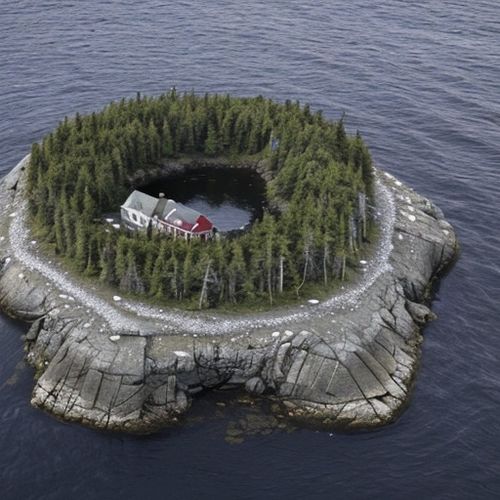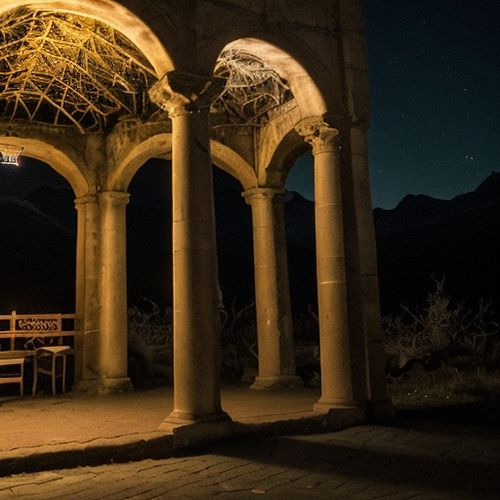From Picasso's "Guernica" to Goya's "Disasters of War," art has long been a powerful medium for depicting conflict. But one of the oldest and most extraordinary examples is France's 11th-century Bayeux Tapestry. Spanning over 70 meters of 70-centimeter-wide linen cloth (approximately 224 feet by 20 inches), this medieval masterpiece tells the story of the Norman Conquest of England in 1066—the last successful invasion of the country by a foreign force. The tapestry depicts the events leading up to and following the Battle of Hastings, where William, Duke of Normandy (also known as William the Conqueror), defeated the Anglo-Saxon King Harold.
The creators of the Bayeux Tapestry remain anonymous, but it is believed to have been commissioned by Odo, Bishop of Bayeux and William's half-brother, to decorate the nave of the new cathedral of Notre-Dame of Bayeux, consecrated in 1077. Since 1983, the tapestry has been housed in the Grand Seminary of Bayeux in northwest France, part of the Bayeux Museums complex, which also includes the Normandy Battle Memorial Museum and the Baron Gérard Museum of Art and History.
However, visitors eager to see this legendary example of medieval art will need to plan their trip carefully. The museum is set to close at 7 p.m. local time on August 31, 2025, for a major renovation and conservation project that will last until October 2027. The reopening is scheduled to coincide with the millennium of William the Conqueror's birth.
A New Era for the Tapestry
The renovation project, led by the City of Bayeux in collaboration with the French State, the Departmental Council of Calvados, and the Regional Council of Normandy, is one of the most ambitious undertakings in the town's history. A new extension to the Grand Seminary, designed by the British architectural firm RSHP, will house the tapestry and double the exhibition space. The 38-million-euro ($36 million) project aims to provide a state-of-the-art facility that will enhance the visitor experience while ensuring the tapestry's long-term preservation.
"In terms of economic and cultural influence, this is the most complex and ambitious project ever undertaken by the Town of Bayeux," said Patrick Gomont, Mayor of Bayeux, in a press release.
The tapestry will be conserved in a hermetically sealed room to protect it from atmospheric pollution and variations in light and climate. It will be displayed on an inclined support specifically designed to meet the conservation needs of this nearly thousand-year-old piece of fragile textile. The original colors, made using plant-based dyes, have remarkably retained their vibrancy over the centuries, though 19th-century restoration work, particularly on the heavily restored final sections, has faded significantly.
Conservation and Restoration
Conserving the Bayeux Tapestry is a meticulous process that requires careful handling and advanced techniques. During periods when the museum is closed to the public, the tapestry's display stand can be moved inside the premises, turning it into a laboratory for monitoring and study. The French State, which owns the artwork, is overseeing an ambitious restoration campaign to stabilize the damages to the embroidered canvas.
Antoine Verney, head curator of Bayeux Museums, explained in a press release that the operations began in January 2025 with the careful dusting of the linen canvas and the removal of its fleece backing, an addition from 1983. The tapestry will be removed from its display case in the fall of 2025, packaged in a conservation crate, and moved to temporary reserves.
The Tapestry's Cultural Significance
The Bayeux Tapestry is not only a historical artifact but also a powerful narrative tool. In the 11th century, when most of the population was illiterate, narrative hangings like this one were a way to tell stories that everyone could follow. The tapestry combines pictures and text inscriptions to depict events such as Harold's death at the Battle of Hastings, where he is famously shown being killed by an arrow to the eye. Other notable scenes include a depiction of Halley's Comet, observed six centuries before the birth of Edmond Halley, the English astronomer after whom it was named.
The tapestry's ability to convey complex historical events in a visually compelling manner has made it a timeless piece of art. It serves as a testament to the skill of medieval artisans and the enduring power of storytelling.
A Global Attraction
The Bayeux Museums attracted nearly 600,000 visitors in 2024, with the majority of international visitors coming from the United Kingdom and the United States. The tapestry's popularity is a testament to its cultural significance and the universal appeal of its narrative. The renovation project aims to enhance the visitor experience by providing a larger and more modern exhibition space, ensuring that future generations can continue to marvel at this medieval masterpiece.
Beyond the Bayeux Tapestry
The Bayeux Tapestry is not the only popular French attraction undergoing significant changes. The Centre Pompidou in Paris, known for its groundbreaking inside-out construction, will close for five years from late summer 2025 for a major renovation. This iconic cultural center, which opened in the 1970s, is set to undergo a transformation that will modernize its facilities and enhance its cultural offerings.
The Bayeux Tapestry stands as a testament to the enduring power of art to capture and convey history. As it enters a new era with its upcoming renovation and conservation project, the tapestry will continue to inspire and educate visitors from around the world. The ambitious plans for its new home reflect a commitment to preserving this medieval masterpiece for future generations, ensuring that its story remains vibrant and relevant in the modern age.
The renovation project is more than just a physical transformation; it is a reaffirmation of the tapestry's cultural significance and a celebration of its role in connecting us to the past. As visitors prepare to experience the Bayeux Tapestry in its new setting, they will not only witness a piece of history but also engage with a living narrative that continues to evolve.

By Noah Bell/Feb 25, 2025

By Natalie Campbell/Feb 25, 2025

By Laura Wilson/Feb 25, 2025

By John Smith/Feb 25, 2025

By Lily Simpson/Feb 25, 2025

By Jessica Lee/Feb 25, 2025

By John Smith/Feb 25, 2025

By Rebecca Stewart/Feb 25, 2025

By Rebecca Stewart/Feb 25, 2025

By Daniel Scott/Feb 25, 2025

By Ryan Martin/Dec 23, 2024

By Emma Thompson/Dec 23, 2024

By Sophia Lewis/Dec 23, 2024

By James Moore/Dec 23, 2024

By Benjamin Evans/Dec 23, 2024

By John Smith/Dec 23, 2024

By William Miller/Dec 23, 2024

By Michael Brown/Dec 23, 2024